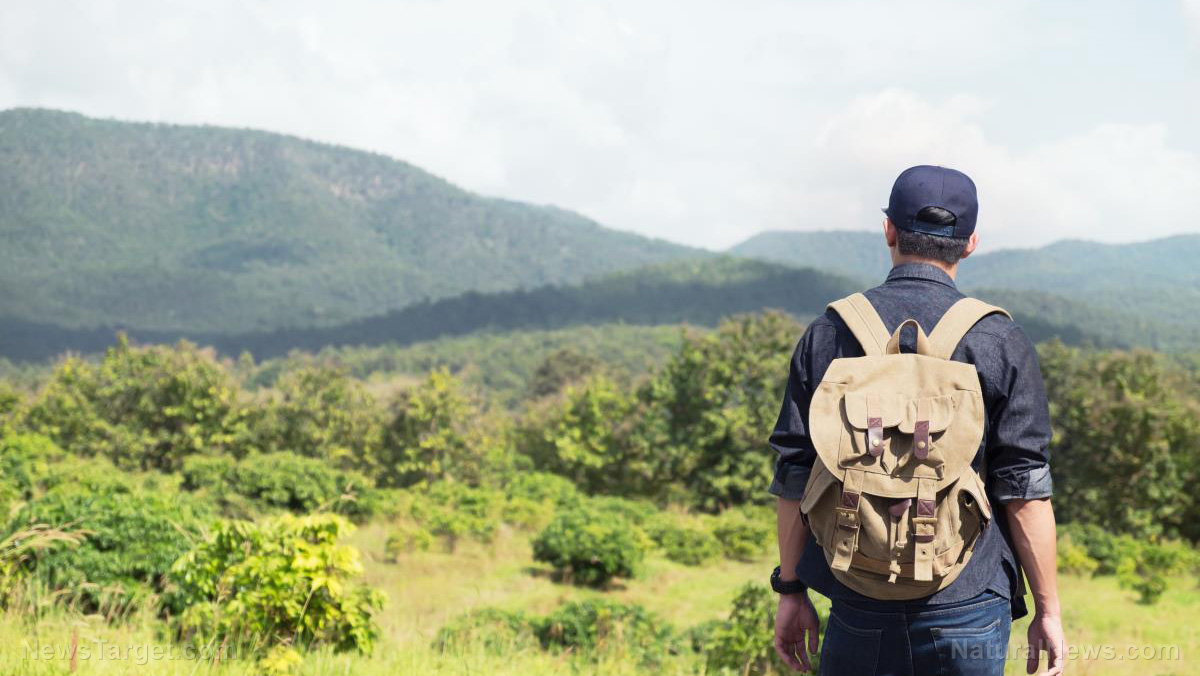Survival kit must-have: The signaling mirror
03/03/2018 / By David Williams

Whether you’re a seasoned survivalist or just a beginner in the field, you probably already have a list of must-have items that are included in your own personal kit. For most people, a survival kit involves only the bare essentials. And there are many who think that an emergency signaling mirror is one of those things.
An emergency signaling mirror is best described as a simple device that can be used to aim signals right at certain targets of your choosing. One of the earliest examples of its modern iteration can be found in an old patent issued in 1951 to inventor Richard Hunter.
There are a number of clear reasons why one should always have an emergency signaling mirror at the ready. It is said that on a bright, sunny day, a proper signaling mirror can be used to catch the attention of a target from as far as 15 miles away. Not only that, but if you’re the one on the receiving end of a signaling mirror’s “signal” then you can expect to catch it from as far as 20 miles out. That’s simply quite an incredible feat for a seemingly simplistic device.
Signaling mirrors work by using a retro-reflective surface on one side that allows it to reflect light back to the source. The same material can be found in certain things like road signs, safety clothing, and car tail lights. Signaling mirrors also contain a mesh material in a central hole, where users are taught to aim in order to hit their targets. Some signaling mirrors need the use of a hand or something else that can block the view for a while in order to aim properly, but the best kinds of signaling mirrors can work perfectly well just based on the use of their central holes alone.
Sponsored solution from the Health Ranger Store: Lab-verified Nascent Iodine solution is a dietary supplement that provides your body with supplemental iodine to help protect your thyroid during radiation exposure. Nuclear accidents such as Fukushima (or nuclear war) can expose your body to radioactive iodine-131, a dangerous radioisotope. Pre-loading your system with stable iodine occupies the iodine receptor sites on your organs, causing your body to naturally expel radioactive iodine you may have been exposed to through air, food, water or milk products. This defensive strategy is recommended by nearly all health authorities, worldwide, including the Nuclear Regulatory Commission. Discover more at this link.
That is to say, not all signaling mirrors are created equal. It’s quite clear that some models are going to be superior to others. Which is why it’s important for you to know exactly what you should be looking for, if you’re looking to get your own emergency signaling mirror.
Look for the following characteristics in a proper emergency signaling mirror:
- Made out of real glass – Some signaling mirrors are made out of plastic, believe it or not. And as you can imagine, the performance and quality just isn’t the same as a real glass counterpart. A glass mirror can reflect light a lot better than a plastic mirror, and that’s true for other things, not just signaling mirrors.
- Has a usable central hole – Some signaling mirrors have holes that require you to compromise a little bit in order to aim properly. You don’t need to adjust to these kinds of mirrors since there are perfectly fine models available, with central holes that work for you instead of the other way around. The ones that show a mesh fireball that you can use to aim at your targets is what you should be looking for.
- Reasonably priced – What use is the best signaling mirror in the world if you can’t afford it? Many high quality signaling mirrors are available for you to purchase, and you’ll find that they can be reasonably priced. Skip all the cheap ones and avoid future headaches by going for the best model that you can reasonably afford.
If you can memorize these tips as you search for your own preferred signaling mirror, you should be well on your way to assembling a proper survival kit for future emergencies.
Read more tips about survival gear at Gear.news.
Sources include:
Tagged Under: emergency signal, emergency signaling mirror, Gear, military tools, preparedness, preparedness and survival, signaling mirror, survival, survival kit, survivalist kit




















